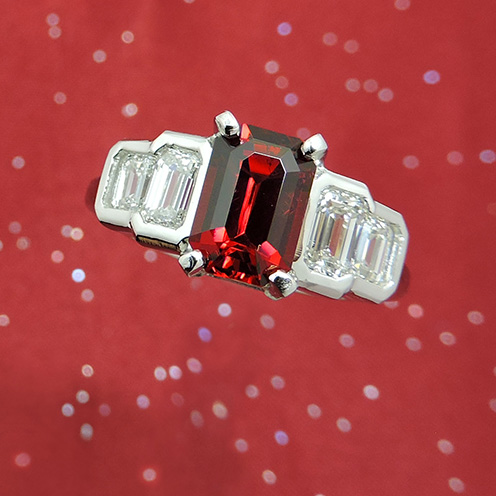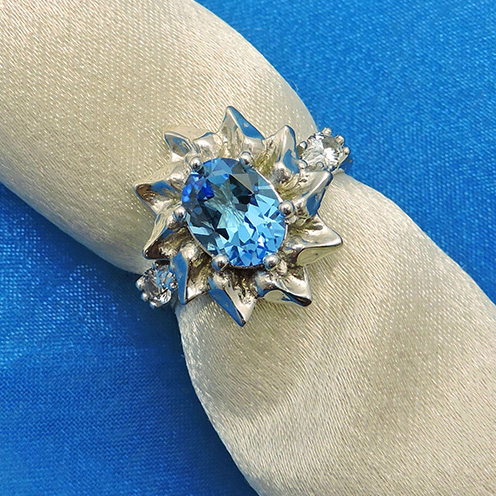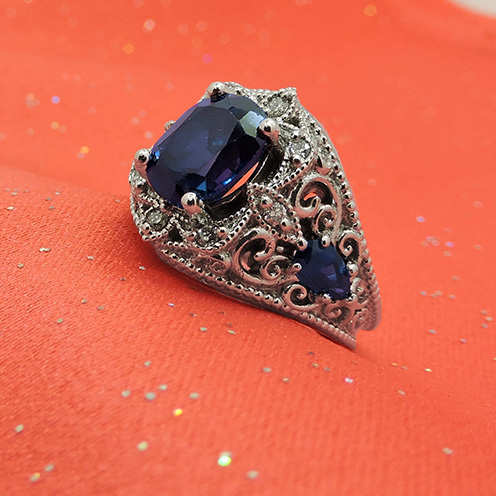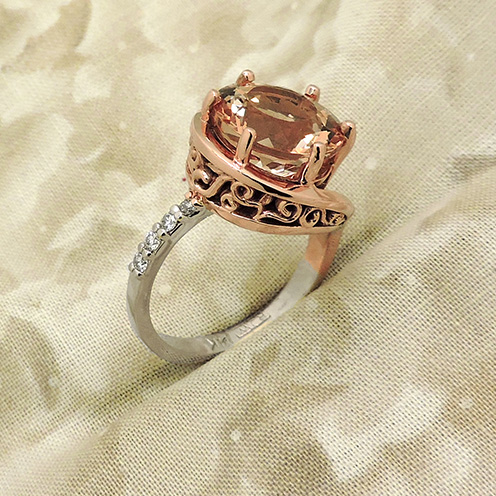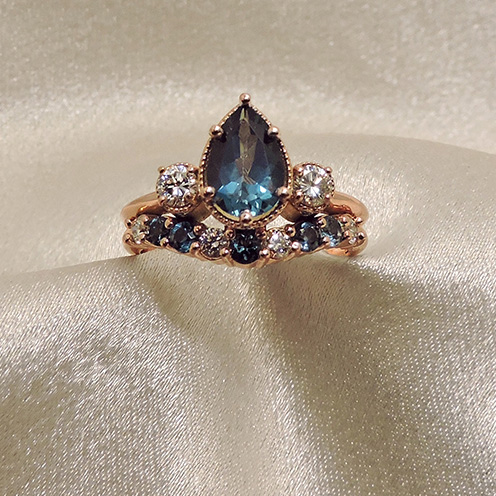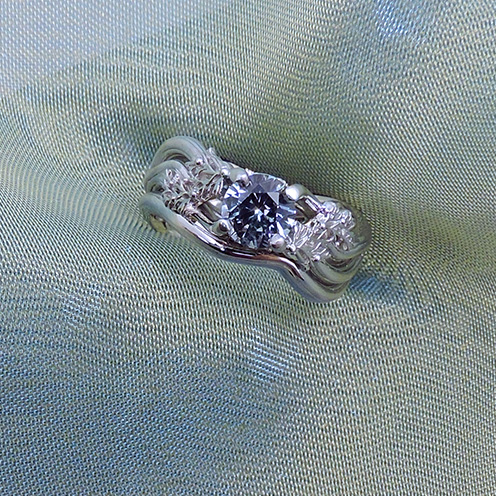Today, diamond rings are the norm when it comes to engagements, and as a symbol, they’ve become synonymous with the love two people who choose to spend the rest of their lives together share. However, it wasn’t always that way. It wasn’t until the late 1940s that diamond rings became popular, made famous by marketing campaigns featuring Hollywood stars and the slogan “diamonds are forever.” This convinced many couples that their marriage wasn’t complete without a diamond ring, but is that really the case? Despite their beauty, durability, and status, diamonds aren’t for everyone. An engagement ring should reflect the same uniqueness found in the person you’re planning to propose to. Unique engagement rings will be all the more meaningful to your partner, and many of the materials are much less expensive as well. Non-diamond engagement ring alternatives can also be just as stunning as diamonds, especially if you get one custom designed with your love in mind.
If you’ve been thinking about non-traditional engagement rings, read on to discover some of the best options available to you.
Lab diamonds
Although the word “diamonds” is in the name, we promise these beauties are non-diamond engagement ring alternatives. That’s because lab diamonds were made in a lab, hence the name, rather than being mined and found naturally in a diamond mine. They’re actually the same mineral as natural diamonds, meaning they will have the same sparkle, hardness, and brilliance as the naturally mined gemstone but come at 30%-50% of the cost. That means you can create some really unique engagement rings without breaking the bank.
Moissanite
When it comes to non-diamond engagement ring alternatives, moissanite is by far the most sparkly. It even sparkles more than diamonds! Don’t let the bling fool you – moissanite is still incredibly tough, registering a 9.25/10 on the Mohs Hardness Scale. It can also get as colorless as an E color diamond, and the material no longer has that yellow tint some have criticized the material for in the past.
Sapphire
Sapphire is widely considered to be the most natural of all the non-diamond engagement ring stones. The material doesn’t need to be heated before being cut as many others do, so if you or your partner have a special interest in 100% natural gems, sapphire’s lack of treatment should be appealing to you. Sapphire also comes in a wide variety of shapes, sizes, and colors so there’s almost no limit to the kinds of unique engagement rings that can be created.
Topaz
When it comes to non-diamond engagement ring alternatives, few give you as much value as topaz. It’s natural, durable, and surprisingly affordable for all that it offers. The cool sparkle gives the material a very refined and sophisticated look that’s different from the sparkle of a diamond, and with an 8/10 on the Mohs Hardness Scale, it should hold up fairly well to everyday bumps and scrapes.
Morganite
Unlike all the other non-diamond engagement ring alternatives we’ve covered, morganite isn’t a white or grey gemstone. Rather, it has a pink-orange color to it that can change depending on the way light hits it. The color is caused by traces of manganese, and it’s a natural shade that makes it complementary to practically every skin tone. This uniqueness does come at a cost, though, as it’s not nearly as durable as some of the other materials that can be used to make unique engagement rings.
Want to learn more about the kinds of non-diamond engagement ring alternatives available? Or maybe one of these materials has given you the inspiration you needed to create a ring that’s just as unique, amazing, and beautiful as the love of your life. Regardless, pay Revolution Jewelry Works a visit!
